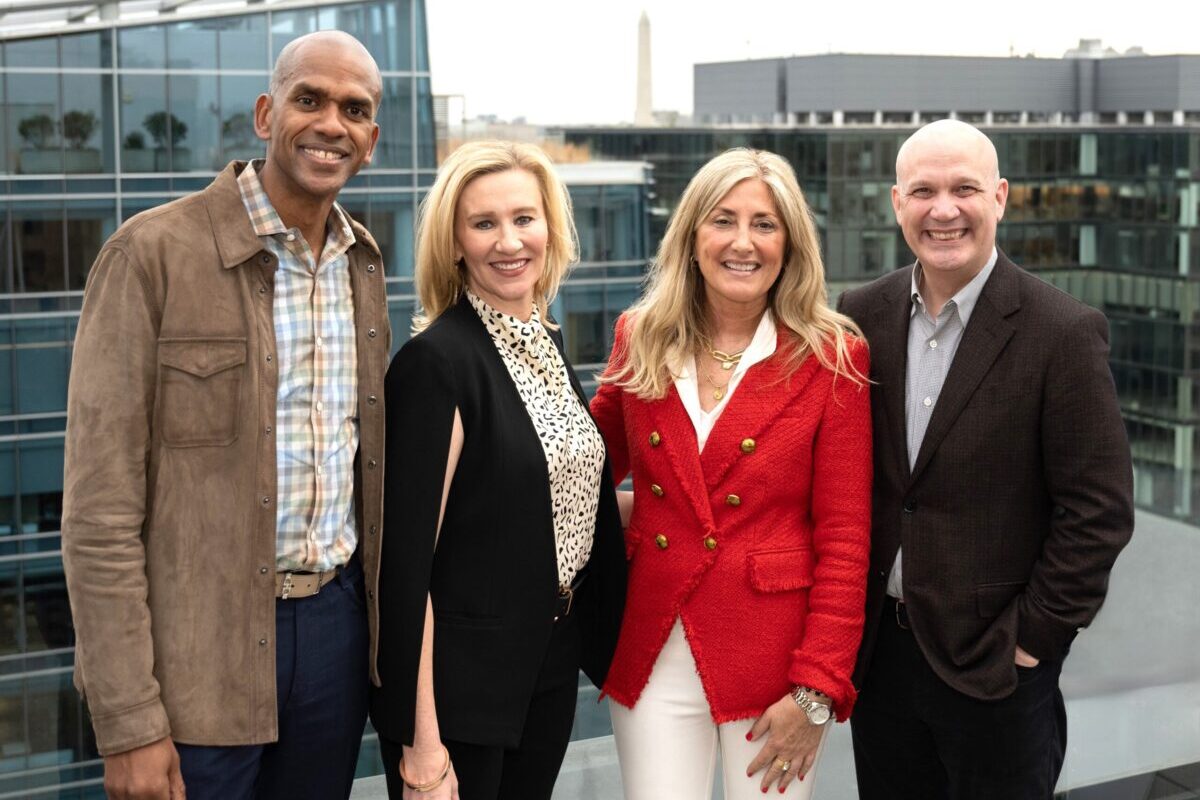From saving money to reducing risk and helping the planet, there are many benefits to conducting an event waste audit. But how do you go about conducting your own? The following post outlines eight basic steps to conducting an event waste audit.
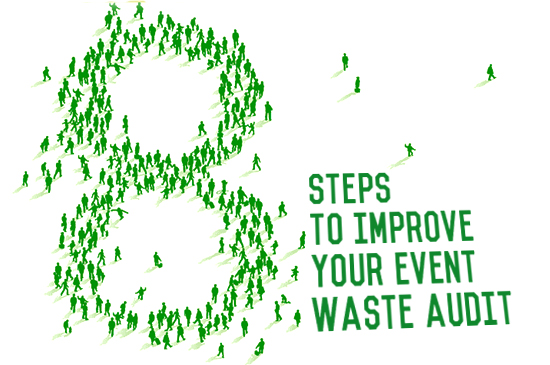
1. Identify the Goal
Waste audits can do many things, including identifying redundant, excess materials and eliminating costs. So it’s important you clarify what you want to learn through your audit. Once you’ve set the goal, it’s important to share it with staff, vendors and other event participants who will be involved.
2. Set the Scope
Be very clear about the scope of event activity you’ll be auditing. Is it all of the event? Or just one aspect?
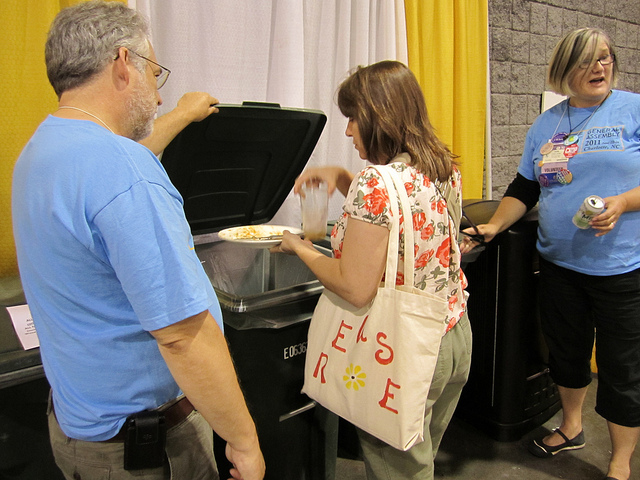
This may depend on the resources you have available: time, labor and money. Or perhaps where you perceive the greatest benefits are possible. Some waste audits last through an entire event, which can be important if you want to gain insight into waste produced during move-in, move-out and live event days.
Others might cover a 24 hour period as a sample; an ideal way to accommodate limited resources. Another option is to isolate a certain area of the event to analyze, such as food waste from meals, or waste from exhibitor booths.
3. Don’t Cross the Streams!
Your waste audit is not going to be very accurate if you allow other event waste to co-mingle with yours. So make sure you isolate your waste stream from any other events that may be taking place at the same venue around the same time. This may involve setting up a special area to marshal your waste while it is being sorted.
To ensure success, brief cleaning staff about any variations to standard disposal procedures. For example, make sure they bring waste from your session rooms to your area, while taking other event waste elsewhere. Another part of this step is making sure venue waste equipment is emptied prior to your audit, so any residual waste from earlier events is not counted with yours.
4. Identify, Enroll and Communicate With Waste Managers
Many, many hands touch event waste. This includes venue operations staff, catering staff, temporary vendors, exhibitors, planning staff and perhaps even attendees. By connecting with these different waste managers you can learn how materials move through your event, from unloading to set-up and tear down. Be prepared to inform and enroll existing waste managers in new procedures that may be needed for the audit.
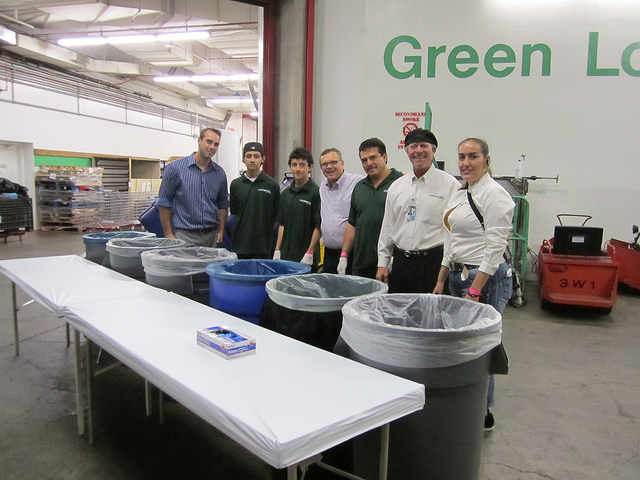
And don’t forget: you may also need to recruit staff and volunteers to do your sorting! If you do not have resources within your organization, consider asking if there are any local recycling or student teams that may be keen to help.
5. Equip Yourself
Event waste audits require special equipment to make measurement easy and ensure staff are safe.
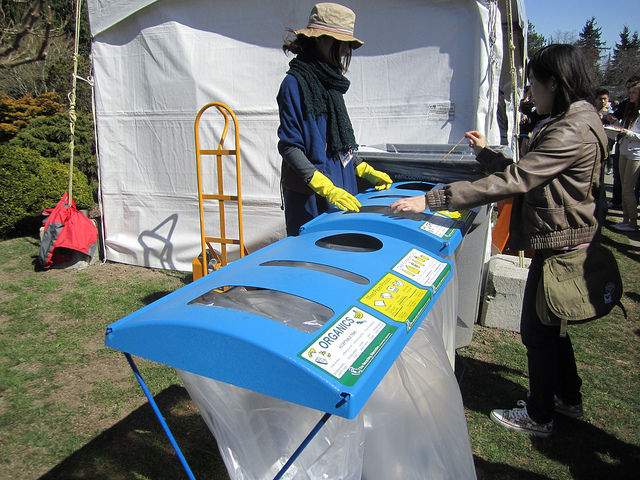
Following is a helpful checklist to get you started:
– Scale for weighing waste.
– Containers for marshalling and disposing of waste, ideally that are standard sizes, like 56 gallons, which helps easily estimate waste volume by sight. Standard colors for each stream can also help, such as blue for recycling, green for organics and black for landfill.
– Trash grabbers or pickers, preferably long enough to reach inside your deepest containers.
– Gloves, ideally latex and non-latex, for any sorters who may have sensitivities.
– Aprons for waste sorters, who should wear closed, durable shoes.
– Waste bags, possibly colour-coded for different waste material. Bonus points if the bags match the colour of your bins!
– Tables that you’re not afraid to get dirty.
– Signage for labelling bins. Posters with images of materials can help make it easy for sorters.
– First aid kit and contact information in case of emergencies.
– Hand washing station or hand sanitizer.
6. Make It a Mission – Make It Fun!
Let’s face it: dumpster diving is not a glamourous task. But that doesn’t mean it can’t be fun. Look at ways you can gamify the experience, and reward sorters for the accuracy and quickness of work. Bring a chalkboard where you can post up your goals, record the day’s accomplishments, and list the benefits that have resulted from sorting. Consider providing special “appreciation” breaks and meals in a clean, separate area. A fun soundtrack of energetic tunes can also keep the work moving.
7. Collect the Numbers
Most waste audits measure waste by volume, or weight. It’s quite easy to measure by volume of you use standard size containers to sort your material. Merely record how many containers of each material you have and multiply by the volume of each container. Remember – you need containers for each type of material you want to analyze. That might mean many containers if you have diverse materials!
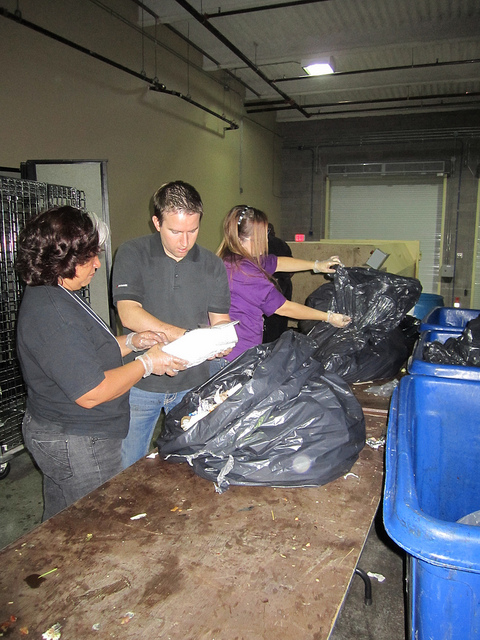
It’s also possible to measure by weight, if you have a scale. If you weigh the stream, make sure to subtract the weight of your containers to get most accurate measures. Whatever you do: pick one type of measurement and stick to it! Only volume or only weight. Mixing the two will give inaccurate results. Consider displaying your materials as a pie graph, to show relative percentages of each material.
8. Report and Recommend
Based your findings, you can then determine next steps that address your objective. For example: if you’re looking to reduce cost and you may want to look at your pie chart and consider how to tackle those pieces of the pie that are the largest and might present cost-saving, like food waste. Food waste is a very heavy stream. And expensive not only in terms of hauling fees, but wasted food you’ve paid for, as well.
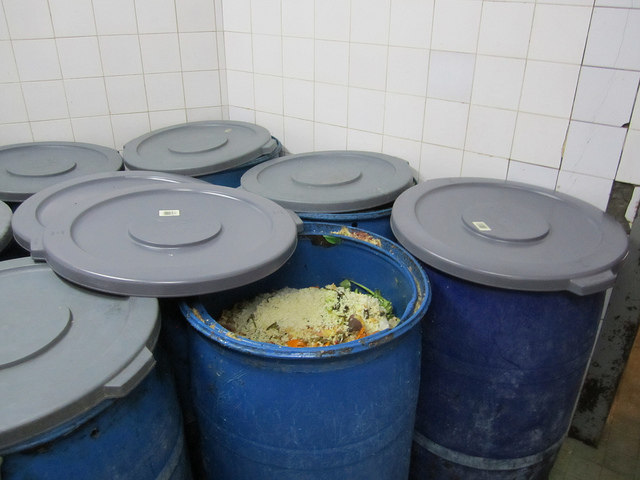
When making recommendations be aware of what you can control, and what you can merely influence. So if waste auditing reveals food waste is your issue, you may want to start with addressing catering services you order, rather than outside concessions, which you may have little power over.
In Conclusion
Waste auditing at events is a dirty job, but can provide rewarding cost-saving insight that is also good for the planet. So why not give it a try? If you do, we hope you’ll find our tips helpful, and report back with some of your own!

